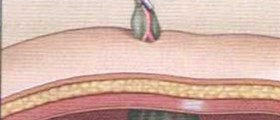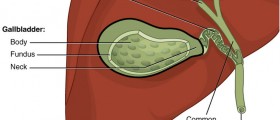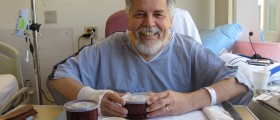
The cholecystectomy is the surgery which is themost common and widespread way of removing the gallstones. In this operationthe removal of gallbladder is performed. This condition is very common andalmost 500,000 people in America suffer from this condition. Every previouslystated fact applies for the symptomatic gallstones, since the asymptomatic gallstonedoes not need surgery.
For the operation, the laparoscopiccholecystectomy camera is used. The doctor uses the camera to gain a goodvision and state of the organs and tissue. By making several incisions, doctorcan insert the instruments and use them to remove the gallbladder. Thegallbladder stones can occur in the liver, liver ducts and other locations. Forthis operation, very tiny incisions are made. This will ensure that patientsexperience as minimal pain as possible. This also reduces the time needed forthe recovery. The day after the operation will have to be spent in thehospital, and home recovery will take several more days. But the activitieshave to be reduced to a minimum. Infection or scarring can lead to the opensurgery. In this case, the laparoscopic cholecystectomy cannot be performed.The difference between these two operations is longer incisions and recoverytime. Hospital stay will take seven days, and at least two weeks of home restand recovery. The risks are present in this situation. Surgery can have someconsequences. The most common side effect of this surgery is the damaged bileduct. When this happens, the infection and acute pain will develop. Thetreatment of this condition can be surgical (in more serious cases) andnonsurgical.
Gallbladder can develop in the bile ducts. Inthis case, the doctor will use endoscope to locate and remove the gallbladderfrom the intestine. ERCP with endoscopic sphincterotomy is the name of thisoperation. However, some cases show that the gallbladder can return after theERCP. It can even take years after the surgery for the gallbladder to beproduced. We have mentioned the treatment which doesn't require surgery. Thismethod can be used only for cholesterol stones and when there is an inabilityto administer anesthesia. The drugs called ursodiol and chenodial can be usedto break the gallbladder stones. Some mild side effects are possible after theuse of these drugs, but positive results from the therapy should be visibleafter several months. Methyl tert-butyl can be inserted into the gallbladderstone and dissolve them in just several days. This is called contactdissolution therapy. But take this drug with extreme caution since it can betoxic. The shock waves can be used to break the stones. ERCP therapy is namedextracorporeal shockwave lithotripsy.
















Your thoughts on this
Loading...